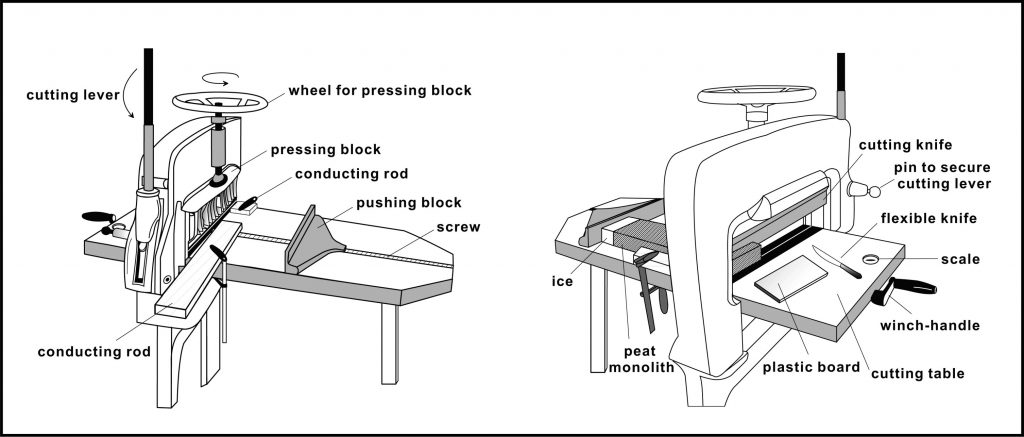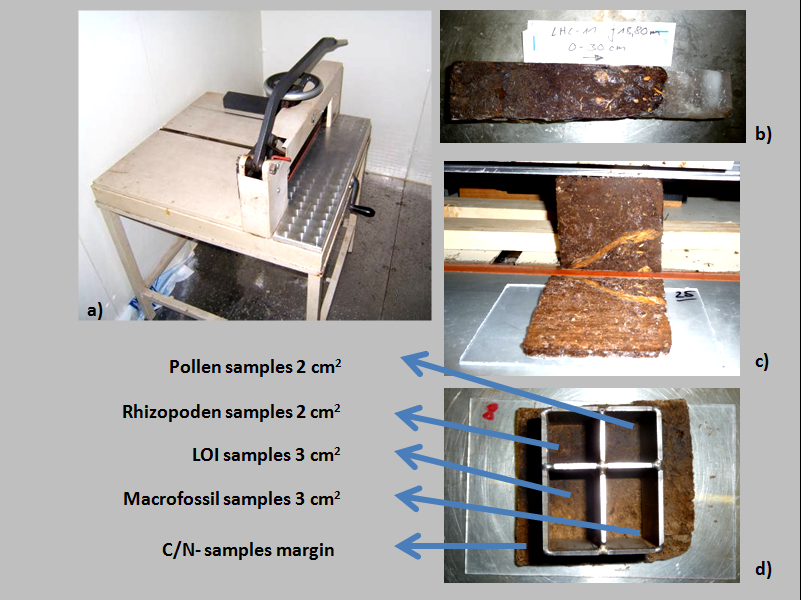DAMOCLES: a DAshing MOnolith Cutter for fine sectioning of peats and sediments into Large Slices
Quaternary palaeoecology is increasingly focussing on a finer temporal resolution and multi-disciplinary approaches in order to address rapid ecosystem developments and consequently to approach the time scale of actuo-ecology. To arrive at a decadal and even annual or subannual resolution, a fine sectioning of cores is necessary. Sawing and grinding techniques are not appropriate because these lead to an (often considerable) loss of material and consequently hiatuses in the chronosequence. Accurate cutter systems have been developed that allow for continuous sampling with very high resolution, but the resulting sample size is generally small. When – as in multi-disciplinary studies – a wide range of different techniques has to be applied concurrently, large samples are required from which synchronous subsamples can be taken.
 The DAMOCLES-device (drawing by Getrud Shittek after photos by Hans Joosten)
The DAMOCLES-device (drawing by Getrud Shittek after photos by Hans Joosten)
The DAMOCLES device (DAshing MOnolith Cutter for fine sectioning of peats and sediments into LargE Slices) is ideal for such sampling: simple cutting devices such as used by the printing industry allow for a precise and fine sectioning of frozen peats and sediments, enabling research with a high temporal resolution. The large slices are useful for the collection of multiple synchronous subsamples for multidisciplinary research and has been used for sample resolutions of 0.5 cm and even 0.5 mm.
 The DAMOCLES-device and its application (photo: Annette Teltewskoi)
The DAMOCLES-device and its application (photo: Annette Teltewskoi)
The DAMOCLES-device was developed by Hans Joosten with technical assistence by Ton van Druten.
Publication:
Joosten, H. & de Klerk, P.(2007): DAMOCLES: a DAshing MOnolith Cutter for fine sectioning of peats and sediments into LargeE Slices. Boreas 36: 76-81.
Your e-mail address will not be published.